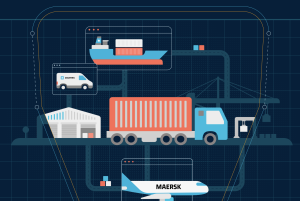How can Procurement professionals unlock sustainable value by effectively managing relationships within the supply chain?
This is the second article in SmartProcurement’s World-Class Procurement Practice series, penned by Ronald Mlalazi (MCIPS), Commerce Edge Academy’s Education Manager. The series is based on Chartered Institute of Purchasing & Supply (CIPS) unit content and on recent research done by Commerce Edge Academy.
This month’s article is based on CIPS Level 4, Unit 4, ‘Managing Purchasing and Supply Relationships’ and will discuss how procurement professionals need to manage supplier relationships to enhance service delivery levels, improve efficiency and effectiveness, boost productivity and save costs thereby influencing the entire supply chain positively.
The world economy is experiencing a slow upturn and anticipates a protracted recovery from the recession. In this environment buyers would be expected to demonstrate their skill and ability to keep supplier relationships unstrained despite the high possibility for tension. The economic swings have created uncertainty and suppliers have become increasingly cautious.
The period before the recession saw suppliers in an investment drive, owing to a projected continued economic boom. Then the recession made itself felt and suppliers were left with excess capacity as demand dwindled. Now the economy is on the upturn and buyers need to satisfy a recovering demand for their products and services, and suppliers may find themselves in a catch-22 situation. The buyers’ demands for raw materials, components or services has increased, while at the same time suppliers are very skeptical, leading to possible strained relationships or suppliers failing to deliver.
In such an environment, one of the key aspects of Purchasing role is to identify suppliers who can meet the five rights: the right quality, the right quantity, the right time, the right place and the right price.
Procurement professionals need to identify the suppliers that will not only meet the above criteria at the lowest total cost, but which will value their business and give them the right attention.
They must be able to ascertain where and how value can be added within the supply relationship spectrum and understand the intricacies of suppliers’ views of their business.
There is a lot of value within the supply chain, which buyers need to identify and unlock in order to position their companies as best-in-class and to help set the pace, becoming the ‘customer of choice’.
The buyer and sellers’ ethical behaviour and relationships are two key delicate aspects that need to be nurtured. In order for Procurement professionals to get the most from their suppliers, they need to demonstrate that they can be trusted with the confidential aspects of a supplier’s business.
Rating one’s ethical profile against the following aspects will enhance these relationships:
• Your level of respect for the confidentiality of information.
• Your ability to remain impartial, and not compromise that impartiality.
• Do you prefer to give orders to suppliers that will personally reward the buyer?
• Do you respect contractual obligations?
• Do you falsify and ‘doctor’ the tendering process and deliberately obstruct the processes of good corporate governance?
Corporate strategy
The Procurement function needs to develop and grow supplier relationships in line with corporate strategy. There are different types of relationships which are driven by what the organisation is trying to achieve. Procurement professionals are expected to know and understand such relationships and strategies and their impact on the organisation. Some of the relationship types that the buyers can use are:
• Arms length;
• Cooperative;
• Collaborative; and
• Partnerships.
In order to achieve sustainable relationships with both the internal and external stakeholders, there are a number of tools and techniques that procurement professionals can adopt and customize to suit their operations:
• Understanding the risk management process.
• Identifying and understanding the different types of relationships.
• Understanding the relationship spectrum.
• Understanding how the supplier views your business.
• The importance of transparency in communication, relationship building and management.
• Understanding your role within the relationship cycle.
• Understanding the costs and impact of changing suppliers.
• Understanding when, what and how to outsource.
• Resolving conflicts and terminating relationships.
• Understanding how to measure and develop supplier relationships.
Sustainable supplier relationships and collaboration should start from within the organisation, with the procurement function understanding the needs of their internal customers, cascading to the external stakeholders.
To learn more about Commerce Edge Academy and CIPS Qualifications, please contact Ronald Mlalazi, Education Manager of Commerce Edge Academy at tutor@commerce-edge.com.


























